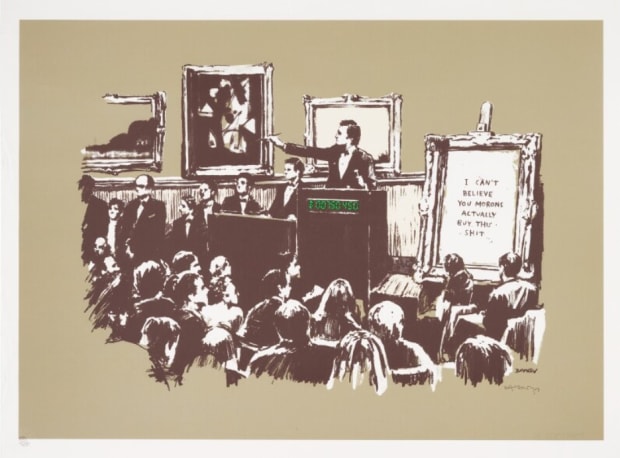-
-
Artists are drawn to printmaking for a variety of reasons. Some are attracted to the physical process of creating an image, whilst others are drawn to the collaborative nature of working in a print workshop. Others are attracted by the way printmaking can record the different stages of an image’s development. Making prints requires an entirely different thought process to painting and sculpture, and some artists enjoy the challenge that this presents. Printmaking is a tradition that stretches back for centuries, and many artists jump at the chance to test their mettle against the great masters of the past. Finally, printmaking is a way for artists to make their work accessible to a much wider audience.
The greatest artists don’t just use the printmaking process to create iconic images; they advance the medium through innovation. Prints require a close collaboration between an artist and a print studio. The process is complex and time-consuming, and the technicians who work with the artist to create their works are highly skilled. As the fruits of such a labour-intensive process, these prints preserve the emotional and intellectual force of an artist’s vision.
-

-
Types of Original Prints
The term 'printmaking' covers a plethora of techniques, each with their own unique quality. Here are some common types of prints:-

Screen Print
Using a squeegee, screenprints are made by pushing ink through a stencil on a polyester mesh onto paper below.
Screenprints are also commonly known as silkscreen prints and serigraphs.
-

Etching
Etchings are created by making indents or incisions into a printing plate using acid. When ink is applied to the plate these sunken areas are filled up. The rest is cleaned away, leaving the image ready to be printed. Paper is placed on top of the plate and they are run through a printing press together. Under high pressure, the paper is forced into the ink-filled grooves in the plate, and the image is transferred onto the sheet.
-

Lithograph
Lithography relies upon the fact that oil and water repel each other. The image is drawn onto a slab of stone or a metal plate using special greasy pencils and ink. Printing ink is then applied to the image; the drawn areas hold onto the ink, and the blank areas repel it. A sheet of paper is placed on top of the inked image and they are pulled through a lithographic printing press. Under high pressure, the image is pressed from the stone onto the paper.
-

Relief Print (Linocut and woodcut)
Both techniques involve carving into a sheet of linoleum or a block of wood using a chisel, sharp knife or v-shaped gouge. The image is formed from the raised areas of the block that have not been cut away. The linoleum or wood block is inked using a roller, and a sheet of paper is pressed against surface, transferring the image.
-
-
At Hidden Gallery, we have over 30 years' experience in dealing original prints and rare works on paper. Click the link below to read the 'Hidden Value' we bring to the process of buying art.
We know that buying artwork can seem daunting, especially if you’re a first-time buyer. In the world of printmaking, it can be difficult to know exactly what you’re looking at. So, what exactly is an Original Print?
Subscribe to receive our weekly newsletter.
Be the first to know about new artwork, exhibitions, events and offers.
* denotes required fields
Sign up now to get exclusive early access to new inventory before it hits our website. As a subscriber, you'll also receive advance notice about upcoming art fairs, events, and special offers. You can read our privacy policy here.









